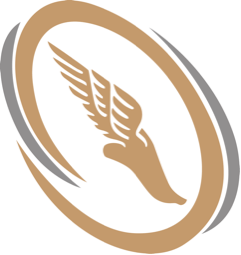Women’s Foot Health
Walking in narrow-fitting shoes or high-heels pose risks for arch and ankle problems in women.
Common issues:
Morton's Neuroma
A thickening of nerve tissue in the ball of the foot resulting from compression and irritation of the nerve, such as from wearing high-heeled shoes that cause the toes to be forced into the toe box.
Bunions
Although both men and women can get bunions, the shoes worn by women sometimes make the deformity get progressively worse.
Heel Pain and Plantar Fasciitis
Although faulty foot structure is the most common cause of plantar fasciitis, in women it may result from wearing non-supportive shoes such as flip-flops and ballet flats.
Ankle Sprain
While anyone can sprain an ankle, women are especially vulnerable to this injury when wearing high-heeled shoes.
CARTIVA® Replacement
Yoga Therapy to Treat Plantar Fasciitis by Kamala
The purpose of yoga is not to do handstands. Nor is it to be able to fold yourself into something resembling a contortionist in a travelling circus act... yoga helps you get unstuck.
It balances flexibility with strength and allows you to breathe into the tight knots that have grown through years of stress and misuse of your body. Yoga helps to smoothen the layers of fascia that weaves through your organs, muscle tissues, bones, nerves, and ligaments.
Repetitive strain on the bottom of your feet; resulting from poor choice of footwear, repetitive actions like running on hard surfaces without adequate padding, practising dance forms like ballet, walking, or standing for extended periods on high arched heels can result in the fascia layers being strained and eventually damaged or torn. This is known as plantar fasciitis.
Here are a few exercises that you can try safely to help seal the injury, protect your foot from further strain and gently coax your muscles and fascia to become unstuck and heal.
Staff pose
Sit with your feet against the wall. Flex your feet such that your toes and heels exert the same amount of pressure on the wall. Feel your sitz bones rooting down on the floor, pelvic muscles are contracted, inner thighs are contracted and are pressing in, knees are extended, and quads contracted; imagine you are wearing socks over your knees, visualize pulling those socks up towards your hips. Place your hands on either side of your hips, sit tall, spine is straight and long. Practise shifting the force of the push from your heels to your toes. Be gentle with yourself. If it hurts too much, place a cushion between your feet and the wall and try again.
Hand to feet pose
Come to standing on your mat with your feet hips distance apart. Check to make sure that your big toe and heel are in one line, perpendicular to the front of the mat. Take a deep breath; reach your arms up and overhead to lengthen through the spine. Pivot from the hips and keeping the length in the upper body, plant your hands under your feet, stepping your toes on open palms with the finger pointing in. Pedal your feet a few times, shifting your weight from one leg to another and using your hands to gently cup the underside of your feet. Practise shifting your weight gently from the balls of your feet to your toes. This gives you extra support through your palms and works to improve your balance by working on shifting stress from your heels to your toes and vice-versa.
Head to knee pose
Just as you did with staff pose, however this time, face away from the wall; sit erect and rooted through your sitz bones with legs extended and quads engaged. Bend your knees and interlace your fingers on the outside of your flexed feet. Then gently begin to straighten your knees away from you, keeping your fingers locked behind the feet. Visualize your torso folding forward and your head touching your knee. Work towards that image. If you do not yet have the shoulder flexibility to keep your hands interlaced outside your feet, you may use yoga straps.
Downward facing dog
Here is another basic yet loaded position. It forms the foundation of any yoga practise. Many who have plantar fasciitis find this excruciatingly painful and cannot bring their heels to touch the mat. Well, here are a few modifications. Ensure that your feet are not too wide or too distant from the medial axis of your hips. Feet should either be touching each other or hips distance apart. Work to press your hands into the mat and your hips to the ceiling, creating space in your lumbar spine and easing the pressure on your hip joints. Next, place a blanket roll underneath your feet to help support your arch and press your feet firmly on the roll. Check to make sure that you are not everting or inverting your feet. The planes of your feet are horizontal with equal pressure distributed from big toe to little. Pedal your feet a few times, bend and straighten your knees are few times – all the while maintaining the muscle engagement and bone alignment of your upper body and hands. Practise rising onto your tiptoes and pressing back onto the blanket roll.
Regards,
Kamala


